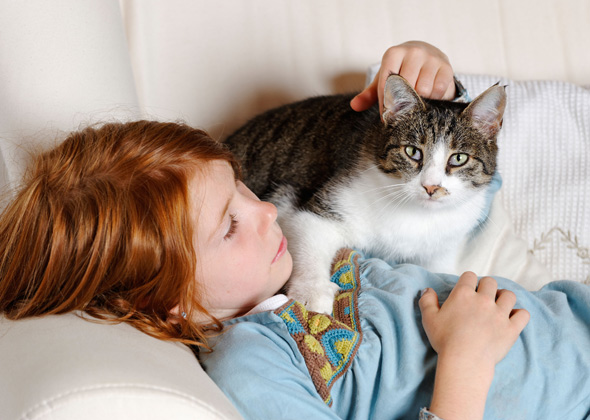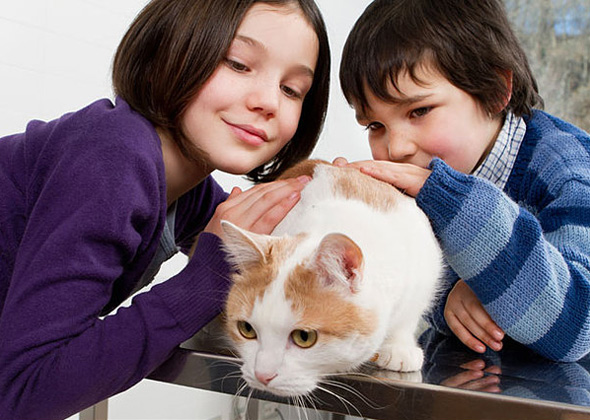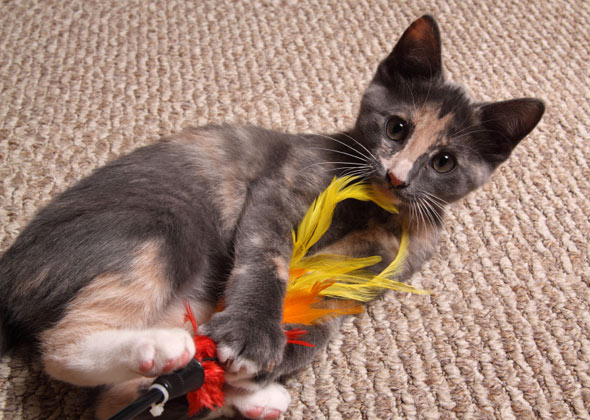Kids and Cats Together: 7 Things to Know
Published on August 11, 2014
Skip To
The relationship between a cat and a child can be a celebratory union that leads to a deep lifetime friendship. On the flip side, the interaction between a feline and young human can be fraught with complication and even physical struggle. Children often fail to read signals from the cat asking for space, and the result can be scratches and bites, with both cat and child upset and frightened. It’s not only falling toddlers or overly friendly 4-year-olds who can have poor interactions with cats; it happens with children of all ages, into the teen years. The stakes of how an interaction goes are high for the physical safety and emotional well-being of both the child and the cat.
To help your child or cat — or both — have better reactions to the other species, it’s important to put boundaries in place for all interactions. Here are seven essential rules that promote peaceful relationships and positive experiences for both human and feline.
More on Vetstreet.com:
To help your child or cat — or both — have better reactions to the other species, it’s important to put boundaries in place for all interactions. Here are seven essential rules that promote peaceful relationships and positive experiences for both human and feline.
More on Vetstreet.com:
- Teaching Kids and Cats to Interact Safely
- 9 Dog Breeds This Vet Is Seeing More Of
- Meet the Cutest Kitten You Will See This Week












